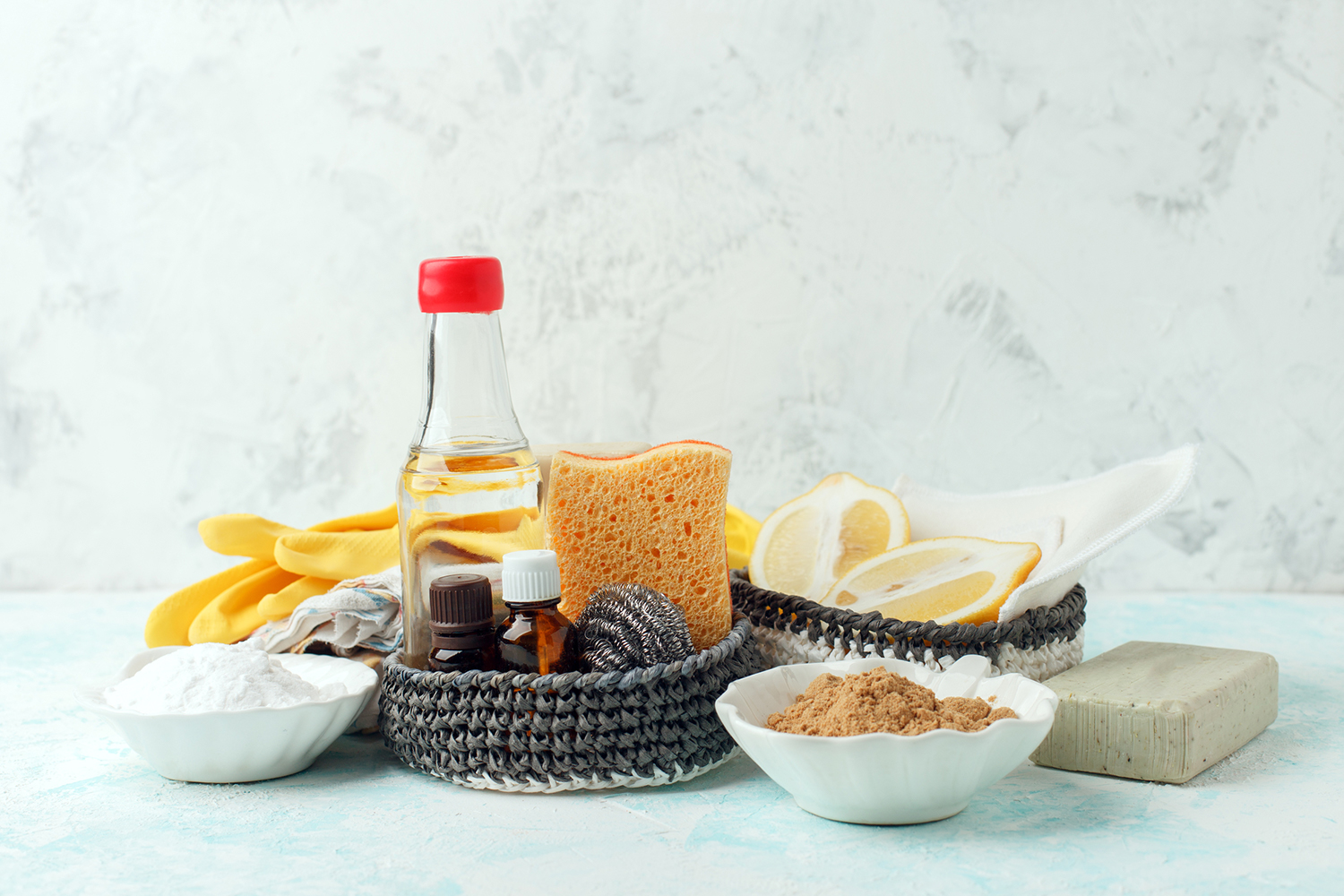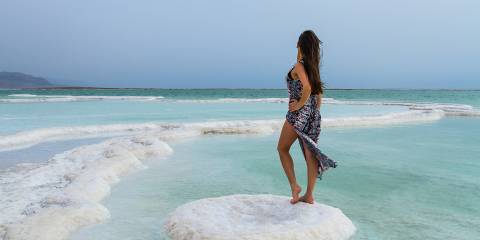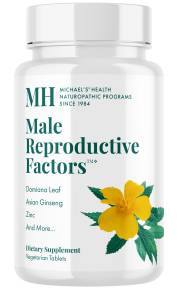Spring is finally here! It’s time to throw open the windows for fresh air and get down to the business of deep-cleaning your home. But mopping up mildew and scouring away grime doesn’t have to mean exposing your household to toxic cleaning solutions.
Consider these home- and Earth-friendly options instead.
Eco-Friendly Cleaning Supplies
-
Tried and True Green Cleaning Staples
Today we have hundreds of cleaning products to choose from, but you can’t go wrong with the old standbys.
Vinegar and baking soda can be used to clean almost anything—mixed with a little warm water these kitchen staples make great all-purpose cleaners.
-
Vinegar
Vinegar is effective for removing bacteria and mildew. A 50-50 vinegar-and-water mix can be kept in a spray bottle in the fridge for easy access. Simply spray and wipe. (But don’t use on marble or granite.) This solution can be used to disinfect doorknobs, faucets, and other places that get a lot of hands-on use.
-
Baking Soda
Baking soda is an effective, natural carpet deodorizer. Just dust the carpet with baking soda, let it sit for 20 minutes, then vacuum.
To keep bathroom drains running freely, pour a half cup of baking soda into the drain, and run a little hot water to wash it down. Leave for two hours to overnight, and then flush with hot water. This won’t clear blocked drains, but pouring a bit of vinegar over the baking soda might do the trick.
-
-
Natural Fragrances
Air fresheners tend to release unwelcome chemicals. Buy fresh flowers or hang dried lavender or eucalyptus instead. Boiling cinnamon, cloves, or other herbs will also release pleasant scents.
-
Essential Oils
Adding a few drops of essential oils to your natural cleaning solutions provides a pleasing aroma and antimicrobial effects. According to Aura Cacia, a producer of essential oils, these oils are best for household cleaning
-
Lemon Oil
In addition to its clean, uplifting scent, lemon’s acidic properties provide antibacterial and antiseptic cleaning actions. It can help remove stains.
-
Peppermint Oil
This purifies air and acts as a mild pest repellent. Mix peppermint with lemon for a refreshing smell. It also blends well with lavender, eucalyptus, and rosemary. Ants avoid chili powder and dried peppermint. Spread either of these near their entry point instead of a toxic insecticide.
-
Eucalyptus and Tea Tree Oil
These distinctive-smelling oils work as air and surface sanitizers. Tea tree oil works well on mold and mildew, as well as musty smells.
-
Pine Oil
Pine essential oil acts as a disinfectant and a deodorizer.
-
Lavender Oil
It has a pleasing scent, is antibacterial, and deters insects such as moths.
-
Doing Laundry
-
Use Cold Water
Washing your clothes in cold water saves energy. For best results, choose a detergent made specifically for cold water.
-
Don't Use Bleach
When laundering whites, consider hydrogen peroxide instead of bleach. A cup of 3 percent hydrogen peroxide is inexpensive, color safe, and less harmful to the environment.
Other Cleaning Tips
Here are more helpful hints for keeping your home and the Earth in top shape.
- Leave shoes at the front door to avoid tracking in chemicals and other pollutants.
- Use washable cleaning cloths as an alternative to paper towels.
- Choose biodegradable trash bags.
- Open your windows to refresh your space. Allowing fresh air to flow throughout your home reduces pollutants, according to the EPA.
- Grow your own clean air. Ordinary, inexpensive houseplants such as English ivy can filter toxins in your home.
- Combine lemon juice and olive oil for polishing furniture.
The "Safer Choice" Label
When you’re standing in the cleaning products aisle at the supermarket, the sheer number of choices available can be overwhelming. The Safer Choice label, developed by the Environmental Protection Agency (EPA) makes finding safe cleaning products easier.
Each product being considered for a Safer Choice label undergoes a thorough review of every ingredient—no matter how much or how little is contained in the final product—and products must meet stringent criteria for the safety of humans and the environment including:
- carcinogenicity
- reproductive toxicity
- developmental toxicity
- toxicity for aquatic life
- persistence in the environment
Thousands of products now carry the Safer Choice label.




